We Have The Xbox Series X And Series S Mockup Consoles: A Closer Look And Size Comparisons
We got our hands on official Xbox Series X and S prototypes and lined them up with the PS4 Pro, Switch, and Xbox One X.
Microsoft's next-gen consoles are looking really sleek, and the two-pronged approach of the Xbox Series X and Xbox Series S doesn't just mean a difference in power, there's also a difference in physical design philosophy. I had the chance to get an up-close-and-personal look at both consoles courtesy of Microsoft, which sent over official mockups of the actual systems well-ahead of their November 10 release date.
These prototypes are non-functional and do not feature any processing parts--they're essentially dummy models. Their weight is not indicative of the actual consoles, but the design and dimensions reflect the final product. With that in mind I took a few photos to examine their form factors, see how they look and fit in a home setting, and compare their size to current-gen consoles.

Examining Their Form Factor
Surprisingly, the Xbox Series X doesn't seem to be as bulky as I thought it would be. The vertical design looks nice as a unique, yet minimalist piece of hardware. Its rectangular build might make it stand out among the familiar consoles, but it certainly doesn't feel out of place.
We already knew its exact dimensions, but it's another thing to try fitting the actual box in spaces at home. I didn't have trouble finding a spot for it, but if your setup already has tight vertical spaces, the height of the Series X, even when laid horizontally, may prove a challenging fit. The most important thing to note is giving the top fan enough room for airflow to keep the system cool.

It's clear that the Series X is intended to stand up vertically, given the orientation of the logo on the power button logo, ports on the back, and the rubber stand attached to the bottom of the console (although there are tiny rubber feet to accommodate horizontal orientation).
Of the two, personally, I think the Xbox Series S takes the crown in terms of having an aesthetically pleasing design. It's a very compact system that sports a simple, traditional shape with no extraneous flair--unless you count the massive fan vent at the top that looks like a speaker, turntable, or hot plate. There are tiny rubber feet to help the Series S stand vertically, but it's intended to be laid flat, given the orientation of the power button logo and back ports.
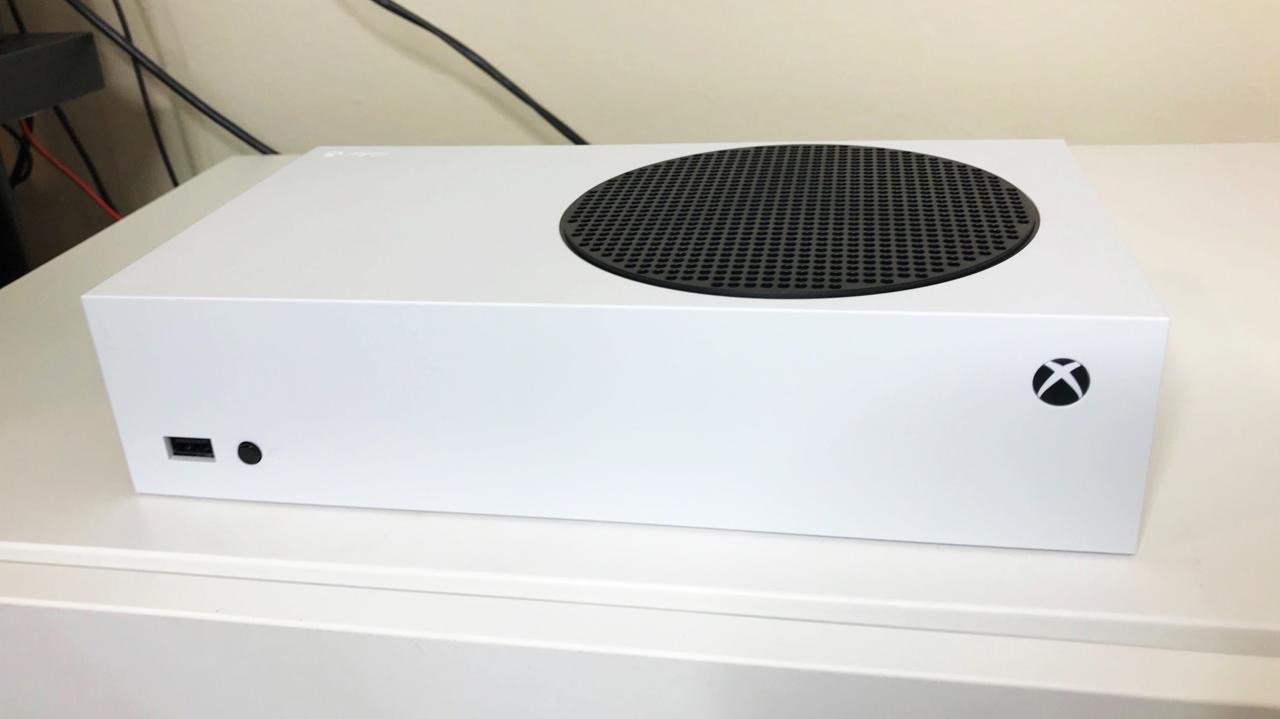
Microsoft states that it's 60% smaller than the Series X and that much is true. While the Series S shares the same measurement in length, when stood up vertically you can clearly see that it's slightly shorter in height and much thinner than the Series X.
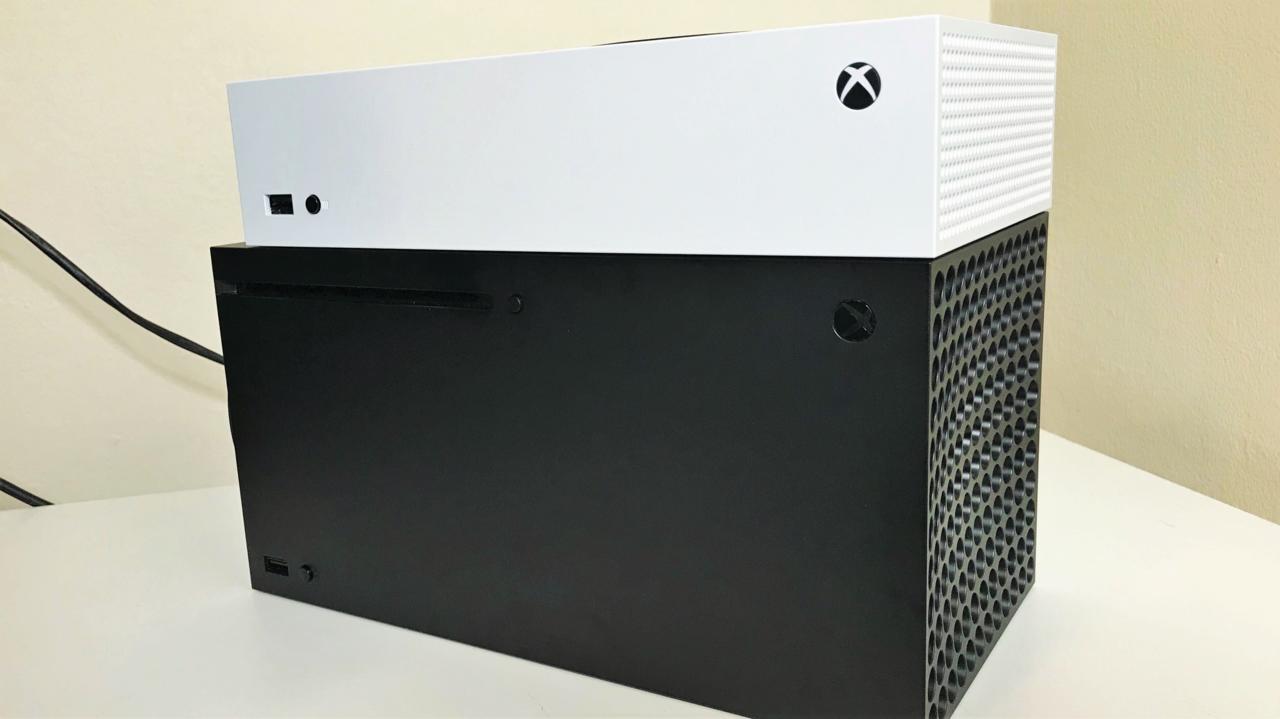
A Quick Look At Their Features
Both systems feature the same ports on the back, although they are laid out a bit differently to accommodate the intended orientation. Behind the consoles are two USB 3.0 ports, an ethernet port, the power socket (same for both Series X and S), HDMI out, and the storage expansion slot for the external Seagate SSD cards sold separately.

On the front, you have one USB port, the wireless connection sync button, and the power button, but as you may know, the Xbox Series S does not feature a disk drive while the Series X does.
Compared To The PS4 Pro, Nintendo Switch, and Xbox One X
When sat horizontally next to the PS4 Pro, it's clear how the Series X is much thicker in height but saves space by cutting down on length. From this perspective, the two systems share a similar width, though. The Series S has about the same height as the PS4 Pro, a bit less width, and like the more powerful Series X, it has about half the length of Sony's console. The compact nature of the Series S really shines in this comparison.
When you have your Nintendo Switch docked, it sports about the same height as the Series X laid flat, which should give Switch owners an idea of how much space they'll need if they're looking to get this new console. Of course, the comparisons of a handheld hybrid console and traditional systems isn't a fair one, but showing the Switch undocked alongside the Series X and Series S should give you an idea of how Microsoft's new consoles physically shape up.
Xbox One X owners are sure to be interested in how the Series X and S stack against the current-gen powerhouse. Horizontally, the One X and Series X share the same width, but of course, the overall height is a clear and major difference. When looking at length, the Series X cuts off about a third compared to the One X.

Things get more interesting between the One X and Series S. They have about the same height, but the Series S shaves off a little bit of width and, like the Series X, cuts around a third in length. When looking at it from all angles while alongside the One X, you really get a sense of the slick and compact nature of the Series S, especially with its unified body and form factor.

We Out Here Tryna Function
We were sent these Xbox Series X and Series S non-functioning prototypes less than a day before publishing this article, so this serves as a casual comparison and up-close look at Microsoft's next-gen consoles. And while these are the complete final shells of the physical design, we don't have anything to share about the gameplay experience, which should go without saying. But that doesn't mean we don't have plenty of coverage about the power these next-gen consoles offer.
The Xbox Series X is set to launch at $499 USD while the cheaper Xbox Series S will go for $299, and both consoles release on November 10. For information on what makes them different from a technical perspective, be sure to read our big Xbox Series X and Series S comparison. And for all our other coverage, check out the stories below.
Xbox Series X And Xbox One News
Got a news tip or want to contact us directly? Email news@gamespot.com
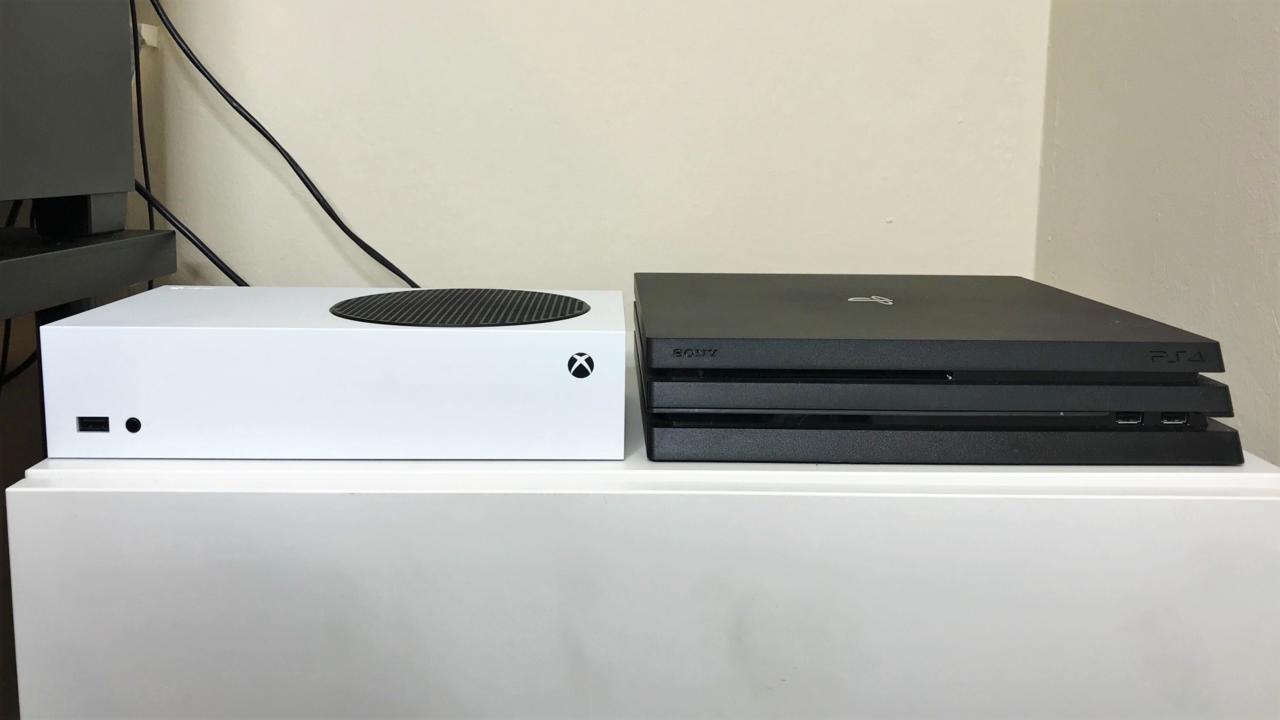

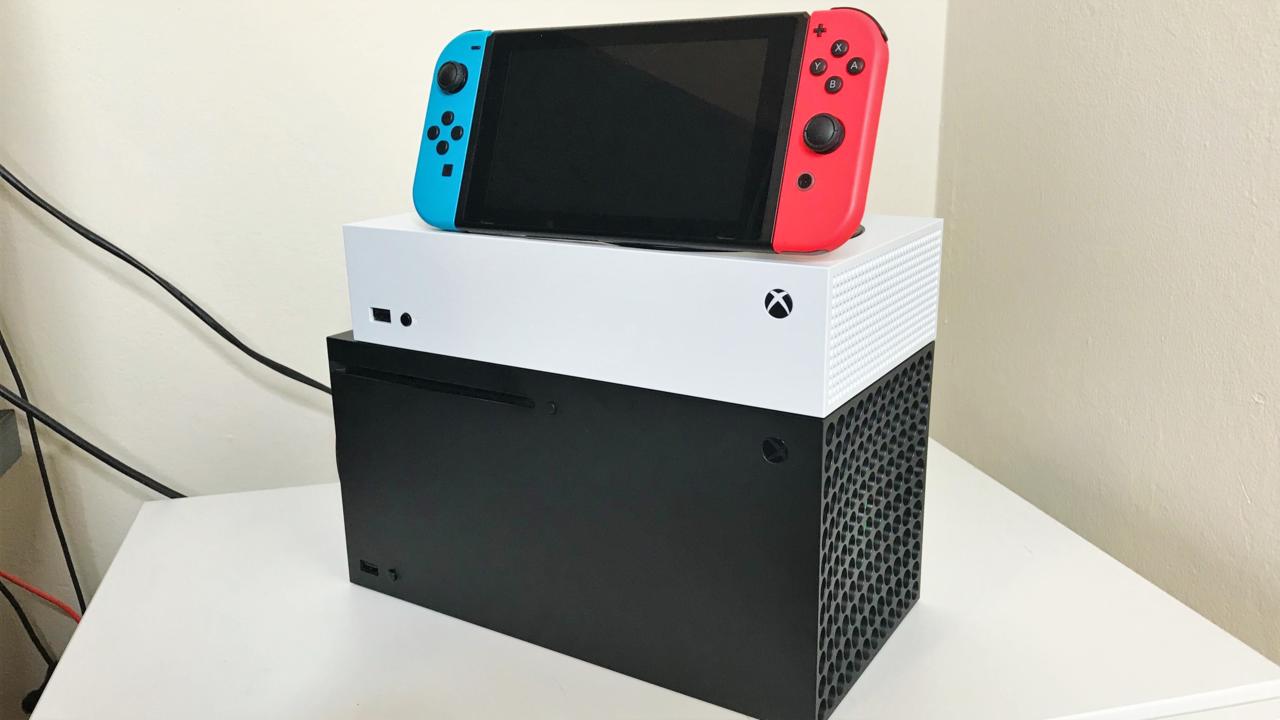
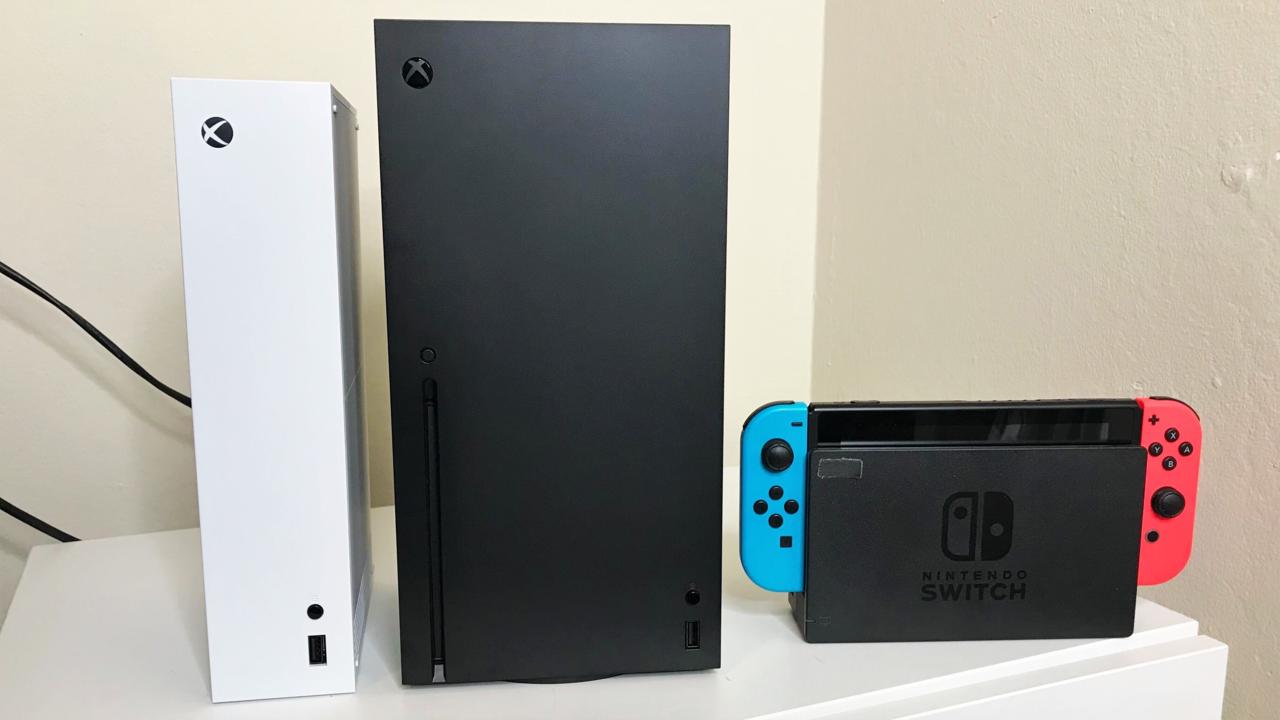
Join the conversation